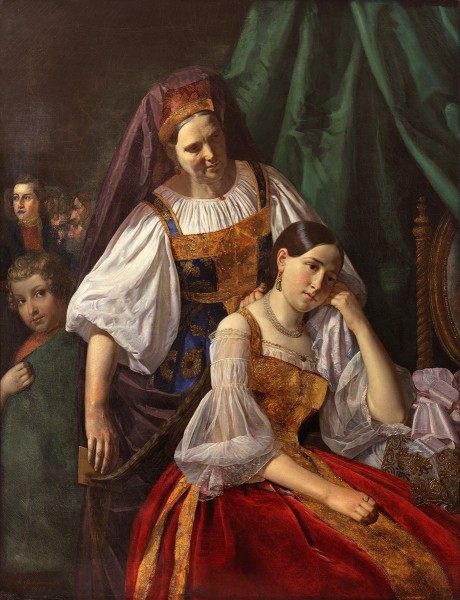Preparing a Bride for her Wedding
1848
Mother, don’t make me
A red sarafan
Stay away, my darling,
Don’t do it in vain
I won’t be replaiting
Two braids into one
Tell me to tie my hair back
In a band!
(Nikolai Tsyganov, Аlexander Varlamov, 1832)
A traditional Russian wedding lasted several days and had a whole set of different rituals, each with their own costume. In Pinega the bridal dress, comprising a red sarafan — a ponitok — and a white shirt made of thin homemade canvas were worn for the ritual of obkruchivaniye (“twisting”), when the bride’s maiden’s band was removed and replaced with a woman’s headpiece. This usually occurred immediately after the church service or in the groom’s house on the following day. The researcher Natalia Taranovskaya spent many years studying the folk art of the Russian North and gave some wonderful descriptions of this festive costume: “From the front it accentuated the bride’s slim figure, at the sides and from behind it fell in thick folds, softly surrounding the body. It was such a beautiful color. The red cloth was aflame, the color pulsating and pouring forth in your eyes. It began to seem that the sarafan was a garment from the sun, and its flames could only be doused by the cloth of the shirt, shining white in the spring snows” (Taranovskaya 1999, 53–54).

